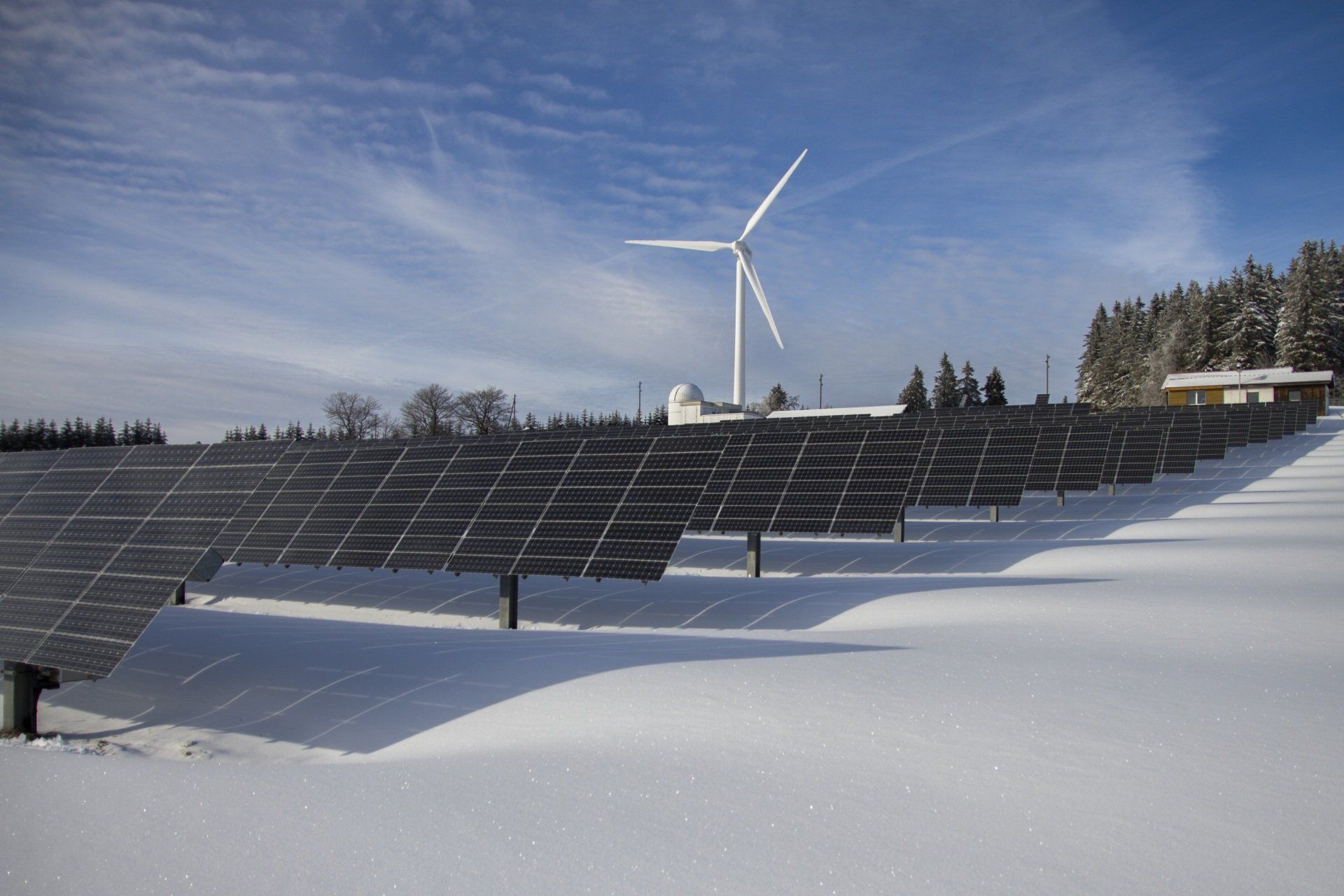Blog
Blog & Research Articles

by Jason Ratcliffe
•
15 January 2024
Eco-friendly home improvements are not just beneficial for the environment, but they also add value to your property. These enhancements can be cost-effective, making them accessible to homeowners of all skill levels. Adopting sustainable practices in home improvement not only conserves resources but also ensures a healthier living space. In this article, shared below by Jason Ratcliffe , practical and low-cost eco-friendly home improvement ideas will be shared. Boosting Property Value Eco-friendly upgrades are increasingly becoming a priority for homeowners and potential buyers. These improvements are seen as investments that pay off by increasing the market value of the property. If selling your home is a consideration, knowing that eco-friendly features are sought after can guide your improvement choices. Making your home more environmentally friendly can be a key selling point in the competitive real estate market. Low-Flow Fixtures Installing low-flow showerheads and faucet aerators is a simple yet effective upgrade. These fixtures significantly reduce water usage, leading to lower utility bills. The reduction in water consumption not only saves money but also conserves an essential resource. This is a practical step toward sustainability that anyone can implement with basic tools. Window Caulking Caulking around windows is a simple yet effective way to enhance a home's insulation . By sealing gaps and cracks, it prevents the escape of warm or cool air, thereby improving energy efficiency. This improvement leads to a noticeable reduction in drafts, making living spaces more comfortable throughout the year. Moreover, better insulation achieved through caulking contributes to lower energy bills, as heating and cooling systems don't have to work as hard to maintain a consistent indoor temperature. Low VOC Paints For interior painting projects, using low VOC ( Volatile Organic Compounds ) paints is a healthier choice. These paints emit fewer toxic chemicals, enhancing indoor air quality. This is especially important in maintaining a safe environment for families with children or pets. Low VOC paints are readily available and offer a wide range of colour choices for eco-conscious decorators. Eco-Friendly Smart Home Incorporating eco-friendly smart home features is an innovative way to enhance sustainability. These technologies depend on a reliable Wi-Fi connection to function effectively. From smart lighting systems to energy-efficient appliances, these upgrades allow for better control and monitoring of home energy usage. Intelligent use of technology can significantly contribute to a home's eco-friendliness. Smart Thermostat Installing a smart thermostat is an excellent step towards achieving energy-efficient temperature control in your home. This innovative device allows for precise regulation of heating and cooling, adapting to your schedule and preferences automatically. By maintaining optimal temperatures only when needed, it significantly reduces energy consumption. Consequently, this leads to a decrease in heating and cooling costs, making it not only an eco-friendly choice but also a financially savvy investment for homeowners. Energy-Efficient Lighting Replacing traditional incandescent bulbs with LED or CFL bulbs is a straightforward upgrade. These bulbs consume less energy and have a longer lifespan, offering both immediate and long-term savings. The switch to energy-efficient lighting is one of the simplest ways to reduce a home's environmental impact. It's an effective strategy for homeowners looking to make sustainable choices without extensive effort. Improved Insulation Enhancing insulation in key areas such as the roof void, walls, and floors can make a significant difference. Proper insulation helps to maintain a consistent indoor climate, reducing the need for excessive heating or cooling. This not only makes your home more comfortable but also lowers energy bills. It’s a fundamental aspect of creating an energy-efficient home. The suggestions provided in this article offer practical, low-cost ways to make your home more eco-friendly. These improvements are not only beneficial for the environment but also add value to your property. With these easy-to-implement ideas, homeowners can create a greener, more efficient living space. Whether you're a novice or experienced in DIY projects, these eco-home hacks are an excellent starting point for anyone looking to reduce their environmental footprint. Post By: Dylan Foster - healthwellwise.com

by Jason Ratcliffe
•
4 February 2023
Healthy indoor air quality within homes is important for a variety of reasons. Poor indoor air quality has been linked to increased respiratory illnesses, headaches, allergies and asthma attacks. Additionally, it can contribute to poor sleep quality and fatigue due to the presence of volatile organic compounds (VOCs) or other pollutants in the home. Having good indoor air quality helps reduce these effects and promotes healthier living conditions for everyone in the household. Furthermore, good indoor air quality can help save energy and money by reducing the need for heating and cooling systems to work harder. Poor indoor air quality leads to a higher demand on these systems as they must work overtime to maintain comfortable temperatures in the home. Improving indoor air quality with proper ventilation, filtration and maintenance of HVAC equipment will reduce this burden and lead to lower utility bills over time. Finally, good indoor air quality helps to protect the environment. By reducing the amount of VOCs and other pollutants released into the atmosphere from inside homes, we can help reduce our overall impact on climate change. In summary, healthy indoor air quality is important for a variety of reasons. It supports better health, energy savings and environmental protection. Therefore, it’s important to take steps to improve the air quality in your home by using proper ventilation, filtration and maintenance of HVAC equipment. But, how as a homeowner can we achieve this? The answer is not a single solution, rather is a combination of various solutions. The way in which a home is constructed and the choice of insulation used is the first choice. PIR (rigid foam) insulations are commonly used within new builds and extensions, as contractors tend to be more comfortable sourcing and handling such materials and are confident of their thermal performance. However, such materials can cause pollutants to be released into indoor air, resulting in poorer air quality. This is commonly combined with increased air tightness which is a method to increase the thermal efficiency of a home. Although, this can significantly restrict airflow through the home (without mechanically vented positive air flow systems) therefore causing pollutants that are released into the air to build up and cause harm to occupiers' health. Water penetration and damp saturation to insulation and walls can create the perfect conditions for black spot mold to grow and spread. This can also cause reduced thermal efficiency of your home, which can then cost more to heat, costing the homeowner more over time. This can be prevented by ensuring the external façade of the building is well maintained and the weatherproofing, whether that be cladding, render, or exposed stone/masonry should remain in good condition, in addition ensuring cavities are not completely filled to allow for natural airflow, especially within more coastal locations. It is also important that wall ties are correctly fitted to ensure any water ingress can discharge out of the building rather than tracking inside. There is also evidence to suggest that the benefits of natural insulation such as sheep wool and hemp wool include the filtration of the internal air, resulting in increased air quality. Our homes are a place we spend a great deal of time, although this may not be something that is thought about a great deal, but is very important for increased health and well-being.

by Jason Ratcliffe
•
4 February 2023
The restrictions that are associated with EPC ratings vary from country to country and can include minimum energy efficiency requirements, maximum allowable carbon emissions, and other environmental sustainability standards. EPC ratings are used to measure the energy efficiency of residential buildings. The rating system assigns a number between 0 and 100, with higher numbers indicating better energy performance. Buildings that score 80 or above are considered “high-performance” and those that score 55 or below are considered “low-performance”. The restrictions associated with EPC ratings can include minimum requirements for insulation, air tightness, window glazing and ventilation systems as well as maximum levels for carbon emissions from heating systems. Depending on the country in which the building is located, there may also be additional requirements such as water conservation measures or renewable energy sources. These regulations help ensure that residential buildings meet certain standards of environmental sustainability while also providing an efficient living environment for occupants. In addition to the rating system, EPC ratings can also be used as part of a financial incentive scheme. For example, in some countries, buildings with high EPC ratings may be eligible for tax incentives or other financial benefits such as reduced energy bills. This helps encourage people to invest in more efficient and sustainable properties that have lower running costs over time. In summary, EPC ratings are used to measure the energy efficiency of residential buildings and can be accompanied by restrictions in order to ensure that the building meets certain standards of environmental sustainability. The rating system is also often used as part of a financial incentive scheme, offering tax benefits or reduced energy bills for those who invest in high-performance properties. Although, EPC ratings can work well with more modern properties that have double or triple glazing throughout and cavity walls, it can become more complicated and less accurate when more complex buildings are rated. Such issues can arise with buildings that have been heavily extended, with multiple construction types, window types, and heating types. Therefore, this relies on the EPC Assessor being experienced to be able to ensure such variations are accurately accounted for. Listed buildings, or buildings within a conservation area/ Area of Natural Outstanding Beauty also may have restrictions on the types of improvements that are possible, causing possible limitations to the improvements that are feasible. When purchasing such a property this should be considered as this will inevitably cause higher energy bills to be expected to heat and cool the property. Also, the recommendations to improve the home that are included within an EPC Certificate do not account for the type of property it is related to. Meaning, that not all recommendations are going to necessarily be appropriate for the type of construction and may cause more harm than good. For example, a cob construction requires a level of moisture to be retained to ensure the structure remains sound, however, as part of the energy improvements this may advise having external wall insulation and cladding, which on such a building increases the risk of excessive drying out and possible structural weakening to the building. If your home is not of standard, modern construction it would be worth seeking specialist advice prior to undertaking any works to check the viability of the improvements based on the location, possible listing and type of construction, to prevent a possibly escalating issue being caused.
© 2025
All Rights Reserved | Jason Ratcliffe -Construction & Nature Enthusiast.